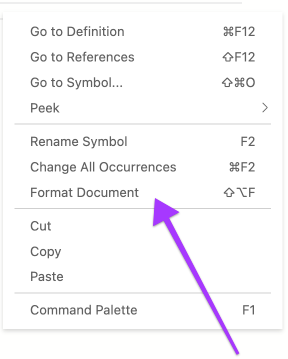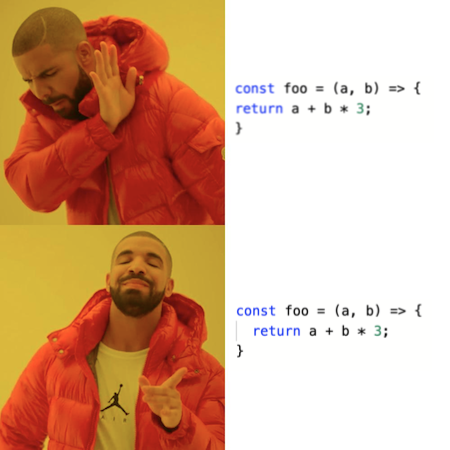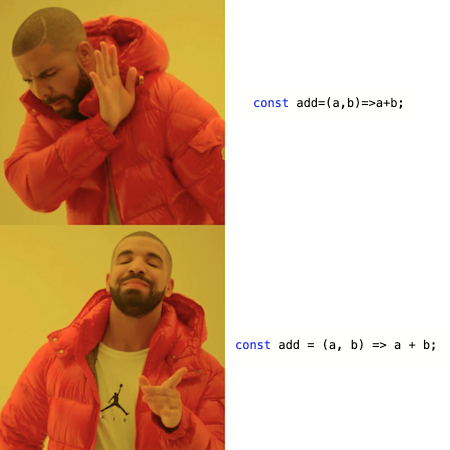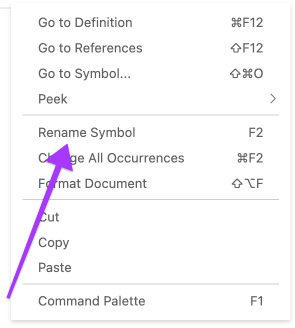Notes from first PRs
A few matters of syle
Function definitions
There are a number of ways to define functions in Javascript.
The oldest looks like this:
function foo (a, b) {
return a + b * 3;
}🚫 Don’t use this style. 🚫
In this class we’re using this syntax
const foo = (a, b) => {
return a + b * 3;
};Later in the year when you know more, I’ll explain why I chose to teach you this syntax.
You can also use the shorthand version
const foo = (a, b) => a + b * 3;This only works when the body of the function is a single expression whose value you want to return.
🚫 Don’t use var 🚫
var is a really bad vestige of Javascript’s hasty original development.
In this class we use let and const to declare variables.
Semicolons
I haven’t talked about semicolons but you should pay some attention to them.
Javascript is pretty forgiving if you forget them but some are required.
For now assignment statements and return statements should end with a semicolon.
That includes the assignment in a function definition
const foo = (a, b) => {
const x = b * 3;
return a + x;
};Importance of consistent style
When you know what well-formatted code looks like, it makes it easier to spot errors.
The autoformatter in the code editor is your friend!
Right click in editor

The “Format Document” command will clean up lots of issues.
Indentation
Indent to show the structure of your code.

Spacing
In general leave space around punctuation.
Let your code breathe!

A couple exceptions
No space between a function name and the opening paren of its arguments when calling it.
foo(10, 20)
Operators with only one operand snug up against it.
!sleepy
i++
Use good names
The names we choose are the main way we can make the meaning of our code clear.
This includes making our own code clear to ourselves.
Use simple, single words when possible.
Variables, especially, tend to have short, simple names.
Functions sometimes have slightly longer names.
Use the same name for the same thing in different parts of your program.
Four functions that take the same kind of value should probably use the same argument name.
const isRed = (bird) => ...
const isSpotted = (bird) => ...
const isNotRed = (bird) => ...
const isNotSpotted = (bird) => ...Choose names that help your code read like English
Good
const isFlobbyBird = (red, spotted) => red && spotted;Okay
const isFlobbyBird = (isRed, isSpotted) => isRed && isSpotted;Not so good
const isFlobbyBird = (x, y) => x && y;What’s wrong with this function?
const manhattanDistance = (x1, x2, y1, y2) => {
return Math.abs(x1 - y1) + Math.abs(x2 - y2);
}It works correctly, but there’s something wrong with it.
Some other naming tips
Avoid ambiguious variable names like o and l.
A name like s1 implies an s2.
Run words together in camelCase.
Rename things to make your code more clear
Often we pick a name and later change how we’re using the variable.
If so, we need to rename it to match its new meaning.
Another handy editor feature
